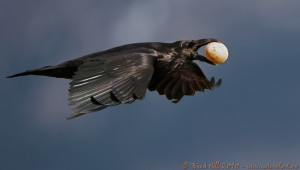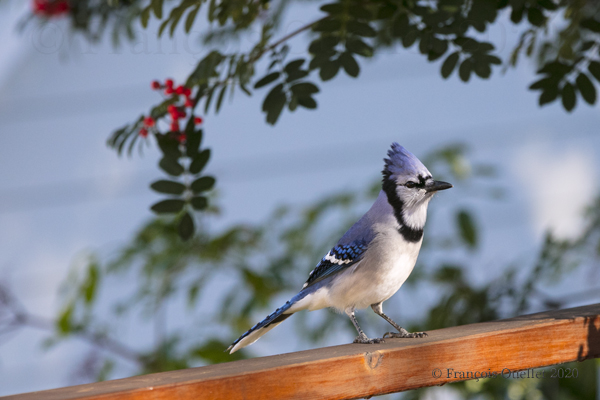
Every Autumn, a Blue Jay lands on our patio knowing he can stock up for the winter. After hearing his calls, I quickly get the peanuts and the camera.
The pictures were taken with a Canon EOS 5DS R which allows significant cropping without loss of quality. In the photo above, the branches of the Russian Mountain Ash surround the bird and provide a natural setting.
I place the peanuts in front of the tree, just to include a few small red fruits in the photographic composition.
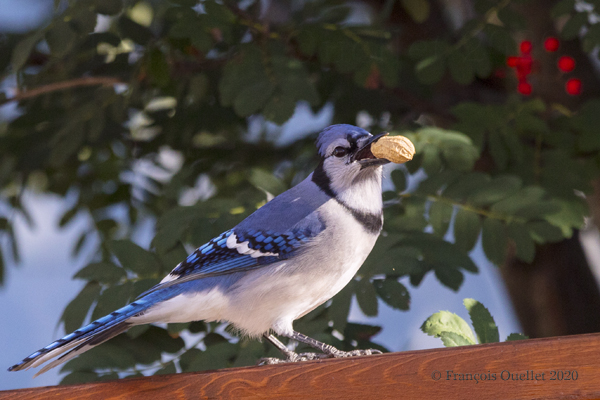
Capturing the blue jay in flight is a bit more difficult, but in the digital age and with a Canon EF 70-200mm f / 2.8L IS II USM lens, photographing birds in flight is made much easier. The photo below was taken with a shutter speed of 1/8000, an aperture of 4.0, and an ISO set at 1250.
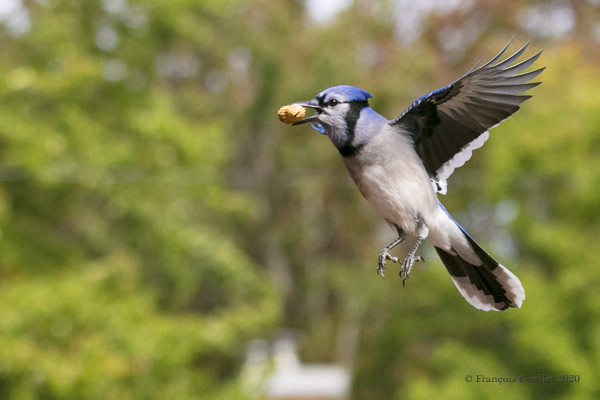
I have yet to see a Blue Jay eat the fruits of our Russian Mountain Ash. On the other hand, the ravens of the neighborhood have no problem with them.
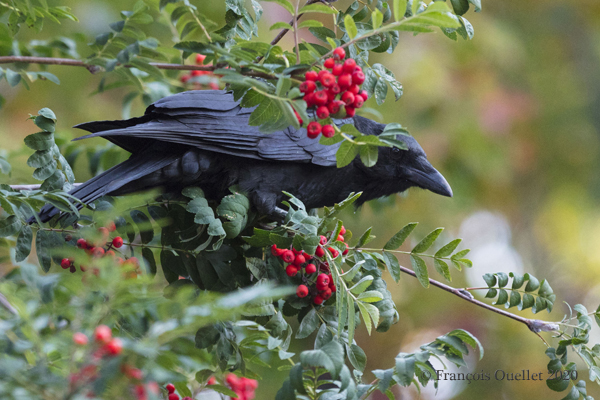
Here is a link for more pictures of Quebec in Autumn on my website.
